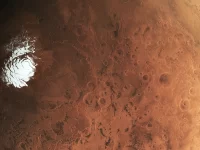In a world of climate crises and fears of societal collapse, planetary relocation has become much more than just a supernormal topic discussed in sci-fi novels, with increasing fields of research being devoted to space discovery and exploration. The advanced research tools used by organizations such as NASA and SpaceX allow for the determination of planet composition and, in turn, habitability. Recent efforts have focused on investigating the current state and astronomical origin of Mars.
In October 2001, the Odyssey Orbiter was launched with a course set to Mars. The orbiter contained three different instruments: the Gamma Ray Spectrometer, the Thermal Emission Imaging System, and the Mars Radiation Environment Experiment. Gamma-ray spectrometry provides details about planets on the elemental level and essentially allows NASA to create a map of the elements and minerals present on Mars. The Gamma Ray Spectrometer consists of the gamma subsystem, neutron spectrometer, and high-energy neutron detector, which all work in tandem to collect information regarding elemental composition. Data is generated by measuring gamma rays emitted by various elements along with recording changes in neutron behavior.
When cosmic rays from the sun impact atoms embedded in a surface, they release neutrons along with energy in the form of gamma rays. All elements emit unique gamma-ray spectra, allowing a spectrometer to identify the elemental components of specific regions of Mars’ surface based on the shape of the energy spectrum. In addition, gamma rays also indicate the relative abundance of specific elements based on the intensity of the spectrum. This information can be pieced together to create a highly specific “map” of the composition of Mars with data on elements up to 13 inches below the surface.
All elements emit unique gamma-ray spectra, allowing a spectrometer to identify the elemental components of specific regions of Mars’ surface based on the shape of the energy spectrum.
The spectrometer has made several notable discoveries since its initial launch in 2001. In 2002, frozen water was confirmed as present on Mars, after an extremely large amount of gamma rays emitted from hydrogen were collected. This further propelled the possibility of life on another planet. After the initial evidence of water on Mars, in 2008, evidence suggested that the red planet used to have oceans up to 20 times the size of the Mediterranean Sea, or double the size of North America, due to the uncharacteristic distribution of potassium, thorium, and iron sediments. The possibility that water existed on Mars in previous times is monumental in the field of planetary research and relocation.
Along with evidence of water on Mars, the Gamma Ray Spectrometer has also allowed for further geoscience investigation on topics such as weather processes, mantle composition, and volcanism. Mars is known to be covered in high amounts of dust, with elemental analysis indicating it may be due to mantle flooding. Scientists have also established that Mars was once a largely active volcanic planet, and with further data collection, the variations in the composition of volcanic remnants could be found. From a physics standpoint, the Gamma Ray Spectrometer provides an excellent method to not only analyze elemental gamma rays on Mars but also the causes of space phenomena such as gamma-ray bursts and extragalactic gamma-ray background. The causes of these gamma-ray incidents are a mystery to many astrophysicists and could potentially relate to the origins of the universe.
Launching the Mars Odyssey itself was an incredible feat, though no one could have predicted what would follow. The devices onboard the orbiter have not only brought about groundbreaking discoveries in geoscience and astronomy but have also sparked hope for the preservation of the species. Space exploration as we know it has only just begun, but the curiosity of humans will never cease in propelling the discovery of the unknown.






